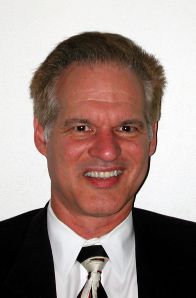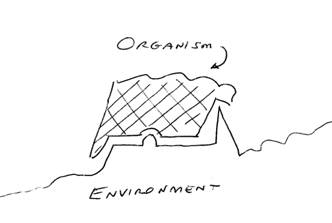Evolution Of Business: Selection
by Richard Barrett Previously…. We reviewed in some detail how the lessons of evolutionary replication and variation may provide insights into business. This time we will begin exploring the third of the three basic elements of evolution:
Previously…. We reviewed in some detail how the lessons of evolutionary replication and variation may provide insights into business. This time we will begin exploring the third of the three basic elements of evolution:
- Replication;
- Variation;
- Selection.
How Does Evolution Pick Winners?
The title question is a trick.
Evolution does not pick winners.
In the first post on this topic we discussed how the environment provides the fitness criteria.
Evolution simply generates a large number of variations. Each variation then “discovers” one specific segment of the environmental topography. With enough variations, evolution can draw a pretty good topographical map of the environment for that species.
In some sense, the species itself is the map of the fitness criteria of the environment. The more closely a species conforms or adapts to the topography of the environment, the better is its fit to that environment.
Good adaptation to the environment is the definition of fitness and survivability.
The simple figure below illustrates how an organism with five features fits its environment. Obviously, it drastically oversimplifies the selection process, but provides a useful starting point for our discussion.

Evolution does not use a calculator to determine fitness. It simply generates millions of organisms, and lets the survivors map the terrain.
We may want to think of each survivor as a single yes/no vote, but evolution does not tabulate the votes to select a winner. Each survivor is a winner in the evolutionary selection sweepstakes, so that winning organism gets to transfer its entire DNA to the next generation.
Evolution may be very harsh, but it is also extremely respectful of each organism. Each survivor wins in toto.
Measuring Fitness—Non-Linear Optimization
Mathematically, we can calculate the fitness of the organism to its environment by measuring the difference between feature points of the organism and corresponding points in the environment. One such calculation is a “least squares” error, which sums the squares of the differences, or errors, between each pair of points.
In addition to the squares algorithm, which measures how well two irregular lines fit each other, mathematicians have developed the linear programming algorithm, which actually calculates the best fit of any set of points (service features) with any other set of points (environmental features).
If this linear programming technique is so powerful, why don’t we just put all the business environmental variables into it and solve for the perfect service?
Because linear programming is much too simple to capture the complexities of the environment for any service.
To be solvable, a non-linear program requires “n” equations with no more than “n” variables, and all variables must be connected in linear relationships.
The real-world environment of survival has many characteristics which defeat a linear optimization program:
- many variables are unidentified;
- most variables have non-linear relationships;
- many variables and relationships change over time;
- many variables work in clusters.
Selection is an arms race.
Many variables are unidentified. In fact, one of the big challenges is to identify which variables participate (or are relevant) to the cluster of fitness criteria for a specific service.
- Does gasoline color affect the demand for it? No, color doesn’t matter.
- Does smell affect the demand for natural gas? Ironically, we know this is true. The smell of natural as is injected artificially, specifically to alert a person to a gas leak. Odorless natural gas is not saleable.
Most variables have non-linear relationships. That is, the service needs some amount of a specific variable, but too much or too little makes no difference to the ultimate fitness of the service. For instance, let’s look at one possible curve for the effect of price on demand.
Below some price, the demand for any product is extremely large. At the extreme low, a price of $0, people will simply use all that they can consume. This typically remains true until the price reaches some threshold value, at which demand now becomes sensitive to it. That is, each penny of increase in the price reduces the demand linearly. Finally, at the far right of the curve, the price reaches a point where the demand drops nearly to zero. This is the classical lazy-S adoption curve.
The price of gasoline is an excellent example of this.
- Below $2.00 per gallon, the demand for gasoline is relatively flat. In other words, prices below $2.00 per gallon do not significantly affect our consumption.
- Above $3.00 per gallon, we start to reduce consumption.
- Above $4 per gallon, we dramatically reduce our consumption.
This has been irrevocably proven in Iran and Venezuela. Both countries subsidize gasoline, with prices well below $1 per gallon. In both countries demand far exceeds availability, so much so that other rationing mechanisms have developed—lines at distribution points, and black markets that offer gasoline at much higher (market) prices, but with easy availability.
At the other extreme, consider markets in Europe, where the price of gasoline is routinely $10.00 per gallon. The obvious results are smaller cars, lower gasoline consumption per capita, and much greater use of alternative transportation. The less obvious results are reduced sensitivity to further price increases. Further increases in the price of gasoline will have more limited effects on consumer behavior because consumers have already made significant adjustments.
All this proves that evolution’s selection process is active and accurate in the business arena.
We have covered a lot of ground to date, with an introduction to evolution and its three basic functions.
Join us next week when we take a moment to review the fundamental parallels between evolution and business.





